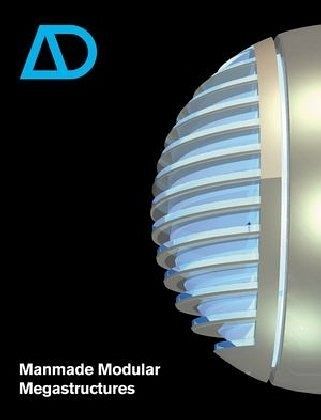Nicht lieferbar

Manmade Modular Megastructures
Versandkostenfrei!
Nicht lieferbar
By 2030, there will be 8.3 billion people on Earth. This presents a unique challenge in terms of provision. Such a massive, largely urban, population will only be able to be accommodated in expansive megacities. Such a development needs to be supported by advances in the art, science and processes of manufacturing. Deploying those abilities will also require us to shrug off the dogma of sustainability that insists only small can be beautiful. Humanity has come a long way since the first modular megastructure was built at Ur, in what is now Iraq. Eco-zealots argue against the mechanised megafor...
By 2030, there will be 8.3 billion people on Earth. This presents a unique challenge in terms of provision. Such a massive, largely urban, population will only be able to be accommodated in expansive megacities. Such a development needs to be supported by advances in the art, science and processes of manufacturing. Deploying those abilities will also require us to shrug off the dogma of sustainability that insists only small can be beautiful. Humanity has come a long way since the first modular megastructure was built at Ur, in what is now Iraq. Eco-zealots argue against the mechanised megaforming of landscape and the modularised production of megastructures. Is this very caution and sense of tact, however, in danger of us denying a portion of the world's population much needed housing?
By 2030, there will be 8.3 billion people on Earth. This presents a unique challenge in terms of provision. Such a massive, largely urban, population will only able to be accommodated in expansive megacities. Such a development, needs to be supported by advances in the art, science and processes of manufacturing. Deploying those abilities will also require us to shrug off the dogma of sustainability that insists only small can be beautiful. Humanity has come a long way since the first modular megastructure was built at Ur, in what is now Iraq. There, four millennia ago, and by hand, the Sumerians built a mud-brick ziggurat to their Gods. Today the green deities of Nature, which we have invented for ourselves, are worshipped with humility. Eco-zealots argue against the mechanised megaforming of landscape and the modularised production of megastructures. Is this very caution and sense of tact, however, in danger of us denying a portion of the world's population much needed housing? The guest-editors, Ian Abley and Jonathan Schwinge of the London-based research organisation audacity, call for development on a bold scale. They argue that by rapidly super-sizing the built environment society is not made vulnerable to natural or manmade hazards, and that design innovation surpasses bio-mimicry. Designers can learn from materials scientists working at the smallest of scales, and from systems manufacturers with ambitions at the largest. This issue calls for creative thinking about typologies and topologies, and considers what that might mean for Africa, China, India, Russia and South America. Megacities everywhere demand integration of global systems of transport and IT in gigantic or spreading structures, constantly upgraded, scraping both the sky and the ground, outwards and into the sea. It is time that man made modular megastructures with some self-confidence.
By 2030, there will be 8.3 billion people on Earth. This presents a unique challenge in terms of provision. Such a massive, largely urban, population will only able to be accommodated in expansive megacities. Such a development, needs to be supported by advances in the art, science and processes of manufacturing. Deploying those abilities will also require us to shrug off the dogma of sustainability that insists only small can be beautiful. Humanity has come a long way since the first modular megastructure was built at Ur, in what is now Iraq. There, four millennia ago, and by hand, the Sumerians built a mud-brick ziggurat to their Gods. Today the green deities of Nature, which we have invented for ourselves, are worshipped with humility. Eco-zealots argue against the mechanised megaforming of landscape and the modularised production of megastructures. Is this very caution and sense of tact, however, in danger of us denying a portion of the world's population much needed housing? The guest-editors, Ian Abley and Jonathan Schwinge of the London-based research organisation audacity, call for development on a bold scale. They argue that by rapidly super-sizing the built environment society is not made vulnerable to natural or manmade hazards, and that design innovation surpasses bio-mimicry. Designers can learn from materials scientists working at the smallest of scales, and from systems manufacturers with ambitions at the largest. This issue calls for creative thinking about typologies and topologies, and considers what that might mean for Africa, China, India, Russia and South America. Megacities everywhere demand integration of global systems of transport and IT in gigantic or spreading structures, constantly upgraded, scraping both the sky and the ground, outwards and into the sea. It is time that man made modular megastructures with some self-confidence.



